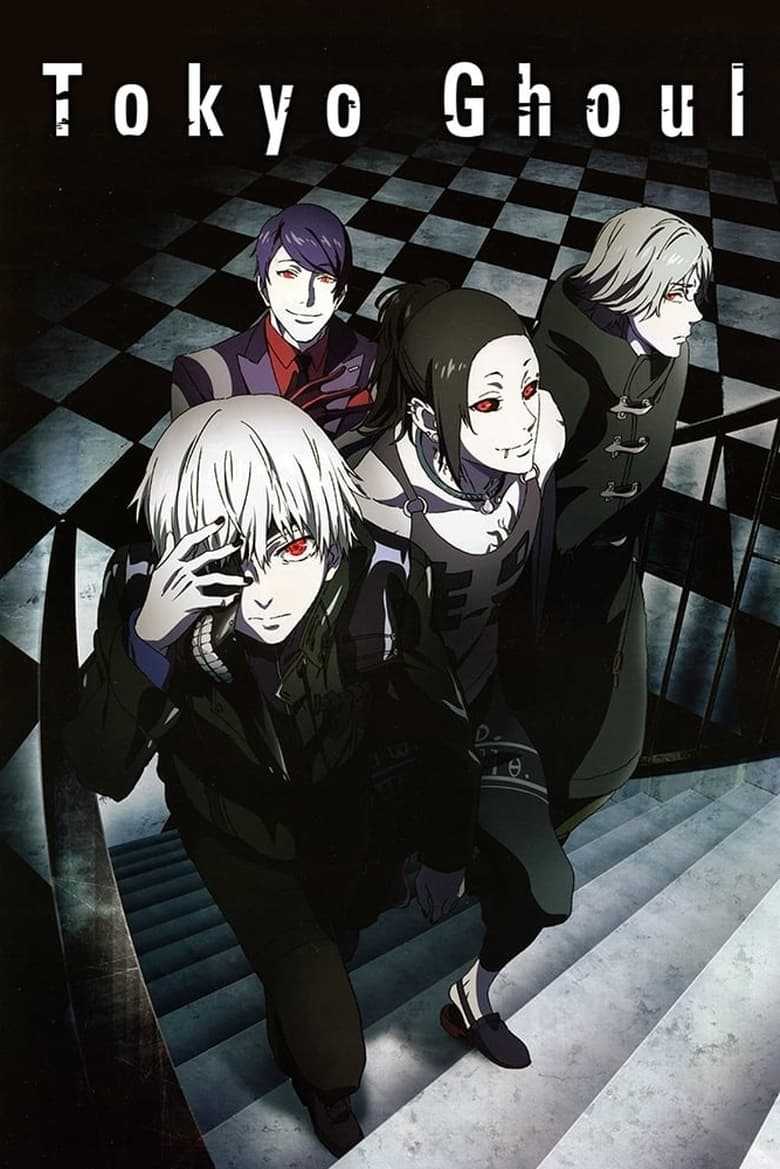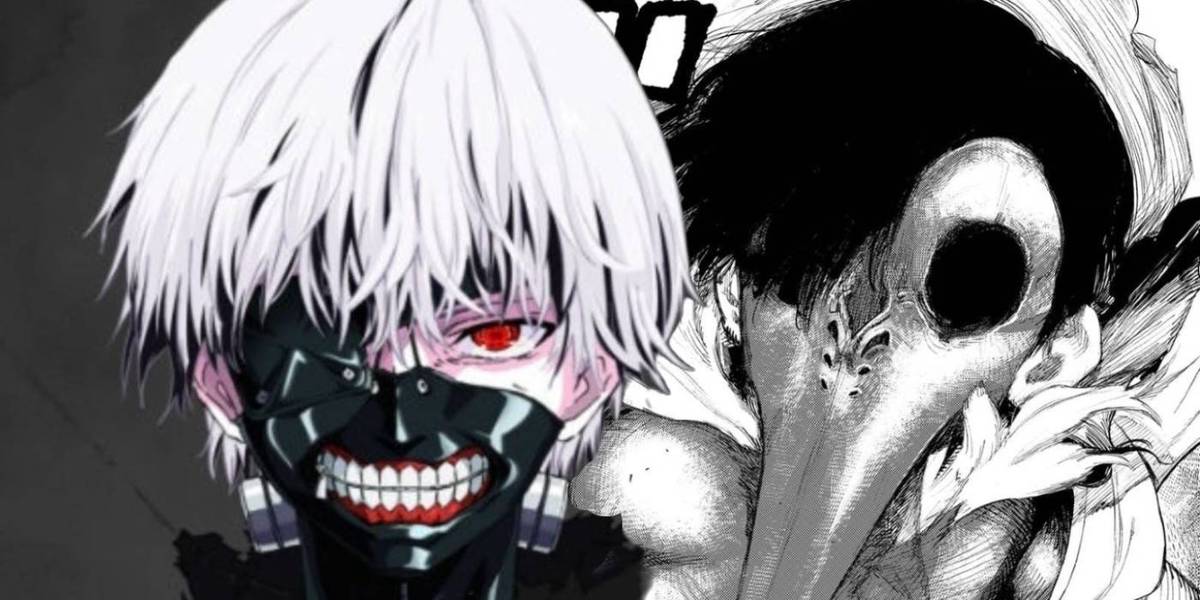Great Manga Should Not Cost Artists Their Health; Just Look at the Creator of Tokyo Ghoul
If you are a serious fan of manga, you've certainly heard horror stories about creating such work, especially with widely successful series like Sui Ishida’s Tokyo Ghoul. It is no secret that long-running manga often come at the cost of an artist's physical and mental health. From Yoshihiro Togashi (Hunter x Hunter) to Eiichiro Oda (One Piece), we have seen the impact art has on creators. And for Ishida, the artist has also spoken about the pressures of his job and the toll it has taken on his health.
With Ishida's latest work, the passion-project Choujin X, Ishida has adopted a model approach in tackling art. His ideology prioritizes his health while also considering the fandom's desire for captivating stories and stunning visuals. So far, the results speak for themselves; Choujin X is shaping up to be another masterpiece by Ishida with the key distinction that, this time, he did it his way.
Tokyo Ghoul Convinced Ishida There Had To Be A Better Way To Make Manga
Ishida Was Unhappy With the Professionalism of Tokyo Ghoul
It's easy to assume any author of a hit manga, one that sold millions of copies and got an equally popular anime, would get rewards that softened the labor involved. It's also easy to imagine that starting out may be rough, but once success hits, an artist's work conditions improve. The editors would become less picky and fans more adoring. While this might be true for some artists, it did not apply to Sui Ishida and his work on Tokyo Ghoul.
In an afterword to Tokyo Ghoul: Re Volume #16, translated by Kenkamishiro, Ishida offers a candid reflection on his life as a manga creator and his work on Tokyo Ghoul. Ishida begins with a clear sigh of relief.
"If I want to be frank about how I currently feel, should I say it feels … liberating?" - Sui Ishida
Ishida attributes the relief to the end of both professional and personal pressures. Professionally, he admitted the relentless deadlines that accompanied the manga's serialization got to him. The weekly turnarounds haunted him throughout Tokyo Ghoul's seven-year run. The deadlines were a constant, formidable foe - a "ghoul" that no matter how hard he fought, would always rise again, unyielding and determined to break him.
On a personal level, Ishida had an acute understanding of himself, a trait that seems surprisingly uncommon with mangaka regarding their limitations. Rather than taking a break, often called a hiatus in the manga industry, Ishida pushed through Tokyo Ghoul from the start to the very end. He explained that he knew if he stopped for any significant amount of time, it was unlikely he'd start again or ever produce the same quality of work he had done previously. So, Ishida simply kept working for nearly seven years without pause.
Ishida Took A Chance With Choujin X And Found A Sustainable Means For Content Creation
The combination of these professional and personal pressures meant writing Tokyo Ghoul “was something that intimately intertwined with” his life to the extent that it “dominated my time and emotions” and led Ishida to “cast away all sorts of things from my life”. Indeed, the work ultimately “changed his relationships with other people” and, in his own words, made him “hate working”. The note from Ishida left many convinced the artist would not pursue manga professionally after Tokyo Ghoul, but that was not the case.
There was good that came with it, but oftentimes there was more bad than good.
Just a few short years after Tokyo Ghoul ended, Ishida returned with Choujin X, an all-new serialization. The story delves into dark fantasy but shifts focus from a secret ghoul society to a hidden conflict between good and evil humans with supernatural abilities. After a few months, it became clear it just wasn't the story that set Choujin X apart from Tokyo Ghoul. Perhaps the most notable difference was Choujin X’s sporadic publication schedule, a sign to many fans that Ishida was perhaps overworked. Readers theorized the work was akin to the torture Ken Kaneki struggled with in Tokyo Ghoul, but they were wrong.
In a conversation with Manga Passion, Ishida elaborated on his previous comments about the life of a manga artist and how it changed his creative approach to Choujin X. Reaffirming his take on the demanding environment and conditions of Tokyo Ghoul's serialization, Ishida emphasized circumstances can change. The artist admitted his prior success gave him leeway to follow his heart, allowing him the creative freedom to work on his own terms.
While deadlines, editors, and fan response remain integral to Ishida's creative process, he protects his schedule. The artist maintains enough flexibility to ensure work doesn't become the burden it was during Tokyo Ghoul. For instance, rather than weekly deadlines, Ishida operates under soft monthly deadlines. This means he is expected to produce a new chapter in a timely manner but has some give when time is tight. Plus, Ishida is also working on his own without assistants, ensuring his work schedule is his and his alone.
While this means more work for him, Ishida admits putting pressure on himself tends to produce top-level content. As he suggested toYomiuri Shimbum, through Kenkamishiro, when it comes to story elements close to his heart, he does not want "anyone to touch them" but himself. Since Choujin X is a passion project, Ishida is definitely protective of the ideas it brings to life.
Choujin X Proves Giving Ownership Is A Win-Win Strategy For Manga Artists
No Manga Is Worth Killing Yourself Over to Create
Ishida’s approach to Choujin X notably differs from the methods other creators have adopted in pursuit of a more balanced work-life dynamic. The artist's process puts creators at the front of the creative journey, a setup that feels both practical and natural for generating manga. This “let creators create and they will come” mindset grants Ishida the freedom to relax and prevent himself from working to death. The process is enviable, and of course, the creator of Tokyo Ghoul knows his schedule comes from a place of privelege. To get where he is today with Choujin X, Ishida had to first bend over backwards with Tokyo Ghoul to earn creative freedom.
Ishida’s experience —and his success with Choujin X— has so far served as an alarm to creators, helping them push back against the rigid rules that govern the manga industry. Moreover, it stands as a powerful reminder that manga should never be prioritized over the creator’s well-being. Honestly, just take a peek and see how well it is working for Ishida andChoujin X.

Tokyo Ghoul
- Release Date
- 2014 - 2018-00-00
Tokyo Ghoul is a live-action adaptation of the acclaimed manga series. Released in 2014, it follows Ken Kaneki, a college student who becomes embroiled in the secret world of flesh-eating ghouls after an encounter with a girl named Rize. The film explores themes of identity and survival in a ghoul-infested Tokyo.









